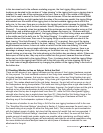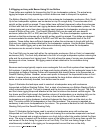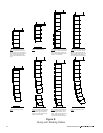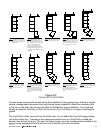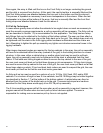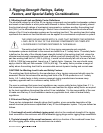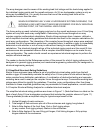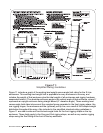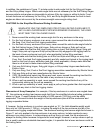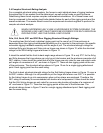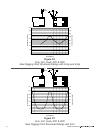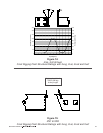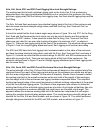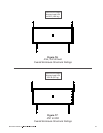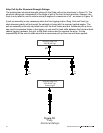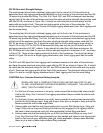
ELECTRO-VOICE
®
In addition, the guidelines in Figure 11 include a side-to-side angle limit for the Xvhg grid hinges
and the Xvhp pickup hinges. Side-to-side angle limits are not necessary for the Xvhl linking hinges
because side-to-side angles are impossible to achieve if the top rigging is within its limits. Front-
to-back limits are not necessary for the Xvhg, Xvhl, and Xvhp hinges because the front-to-back
angles are taken into account by the enclosure weight-versus-angle rating chart.
CAUTIONS for the Simplified Structural Rating Guidelines:
WHEN APPLYING THE SIMPLIFIED STRUCTURAL RATING GUIDELINES TO
ANY X-LINE LOUDSPEAKER SYSTEM SUSPENDED OVERHEAD, THE USER
MUST OBEY THE FOLLOWING RULES:
1. Never exceed the working-Ioad-versus-angle limit for any enclosure in the array.
2. For the front of every enclosure in an array, never exceed the side-to-side angle limits for
the Xvsg, Xvsl, Xvsd and Xvsf rigging assemblies.
3. For the back of every enclosure in an array, never exceed the side-to-side angle limits for
the Xvhl linking hinges, Xvhg grid hinges, Xvhp pick-up hinges or Xvbp pull-up bar.
4. Always make sure that the rear hinge locking pins on every Xvhl linking hinge, Xvhg grid
hinge, Xvhp pick-up hinge and Xvbp pull-up bar are fully engaged in the rigging track on
the back of every enclosure (and grid, when applicable) before lifting overhead.
5. Always make sure that the locking pins on all the front triple-stud fittings on every front
Xvsg, Xvsl, Xvsd and Xvsf rigging assembly are fully seated and locked in the rigging-track
base on the front of every enclosure (and grid, when applicable). Always make sure that
there is not a twist in these chains before lifting overhead.
6. Only use Xvhl linking hinges, Xvhg grid hinges, or Xvhp pickup hinges manufactured by
Electro-Voice.
7. Only use Xvsg, Xvsl, Xvsd or Xvsf front rigging assemblies manufactured by Electro-Voice.
8. Only use Xvbp pull-up bars manufactured by Electro-Voice.
9. If RS-1B double-stud swivel-ring fittings are used, never exceed the working-load limit for
the RS-1B at either the front or the back of any enclosure in an array.
10. When a pull-up assembly is used, never exceed the working-load limits of any of the
components making up the pull-up assembly.
11. When a pull-up assembly is used, never apply a pull-up force greater than that required to
eliminate any slack in the front rigging chains.
Discussion of Array Examples: For example, if the top enclosure in a column was angled down
10°, the enclosure working-Ioad-versus-angle limit from the simplified structural-rating guidelines
shown in Figure 11 would indicate that a total of 4,020 pounds (1,823 kg) could be safely
suspended. This would include the weight of the top enclosure plus all of the enclosures and
rigging suspended below.
If, however, the top enclosure in a column was angled up 15°, the total allowable weight would
then only be 3,840 pounds (1,742 kg) - including the weight of the top enclosure plus all of the
enclosures and rigging suspended below. The enclosure working-load-versus-angle limit shown in
Figure 11 not only applies to the top enclosure in an array column, but also applies to every
enclosure in an array column. In arrays where a pull-up line is not used, the top enclosure is
always the limiting factor because it supports the most weight. However, in arrays where a pull-up
line is used to achieve substantial downward angles, it is possible that a lower enclosure could be
the limiting factor.
29



